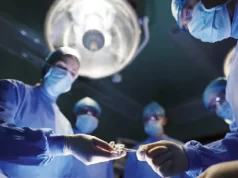World Health Organization declares mpox outbreak a public health emergency of international concern


Mpox, formerly known as monkeypox, is a rare viral disease first identified in the 1970s. The virus is closely related to the smallpox virus, but typically causes less severe symptoms.

Join our Telegram Channel for Updates
While its name suggests a connection to monkeys, the primary reservoirs for the virus are rodents in Central and West Africa
Current Outbreak and Public Health Response
The World Health Organization (WHO) declared mpox a “public health emergency of international concern” (PHEIC) in July 2022, reflecting the rapid global spread of the virus. Although the PHEIC status was lifted in May 2023 and redeclared in 14th August 2024, the situation remains critical, especially in Africa, where most cases have been reported.
In Africa, particularly the Democratic Republic of Congo (DRC), the outbreak has been severe, with over 14,000 cases reported in 2024 alone. The continent faces significant challenges in controlling the spread due to limited resources, vaccine shortages, and difficulties in testing and contact tracing.
Transmission
Mpox spreads primarily through direct contact with infected body fluids, lesions, or contaminated materials such as bedding.
It can also spread through respiratory droplets during prolonged face-to-face interactions, though it is less contagious than diseases like COVID-19.
The incubation period ranges from 5 to 21 days, with most cases developing symptoms between 6 to 13 days after exposure.
Symptoms
The time it takes for symptoms of mpox to appear after exposure can be between 5 and 21 days. The first stage of the illness, which usually lasts 1 to 3 days, includes symptoms like fever, severe headache, swollen lymph nodes, back pain, muscle aches, and extreme tiredness.
After this, the skin rash appears, lasting 2 to 4 weeks. The rash starts as flat spots, which then turn into raised bumps, then fluid-filled blisters, and finally pus-filled sores before crusting over and healing.
The death rate among people with mpox has varied between 0% and 11%, with higher rates seen in young children.
Treatment
The treatment for monkeypox (mpox) primarily focuses on relieving symptoms, as there is no specific cure for the virus. Researchers are developing and testing various treatments that might help manage the disease more effectively.
Preventing the spread of mpox involves educating communities and healthcare workers about the virus to reduce infections. Avoiding close contact with infected individuals or contaminated items is crucial. When caring for someone with mpox, whether at home or in a healthcare setting, it’s important to wear protective gear like gloves and other personal protective equipment (PPE).
For cases where the virus spreads from animals to humans, it’s essential to avoid contact with sick or dead animals and ensure that all animal products, especially meat, are thoroughly cooked before consumption.
The discontinuation of routine smallpox vaccinations has made people more vulnerable to mpox since the smallpox vaccine previously offered some protection. Studies show that the older smallpox vaccine was about 85% effective in preventing mpox. Those who were vaccinated against smallpox in childhood, including family members, health workers, and lab personnel, may still have some level of protection.
In recent years, new and safer smallpox vaccines have been developed, and some of these may also help protect against mpox. There are currently three vaccines available for this disease, though supplies are limited, and some countries are recommending them for people at higher risk of infection.
Key Concerns and Future Outlook
The current monkeypox outbreak is the largest seen outside Africa, raising concerns about its potential to become a more widespread public health crisis. Factors such as increased human-to-human transmission, potential virus mutations, and the movement of people across borders contribute to the complexity of controlling the outbreak.
Public health experts continue to monitor the situation closely, focusing on understanding transmission dynamics, improving surveillance, and ensuring that the global response is coordinated and effective to prevent further escalation.













